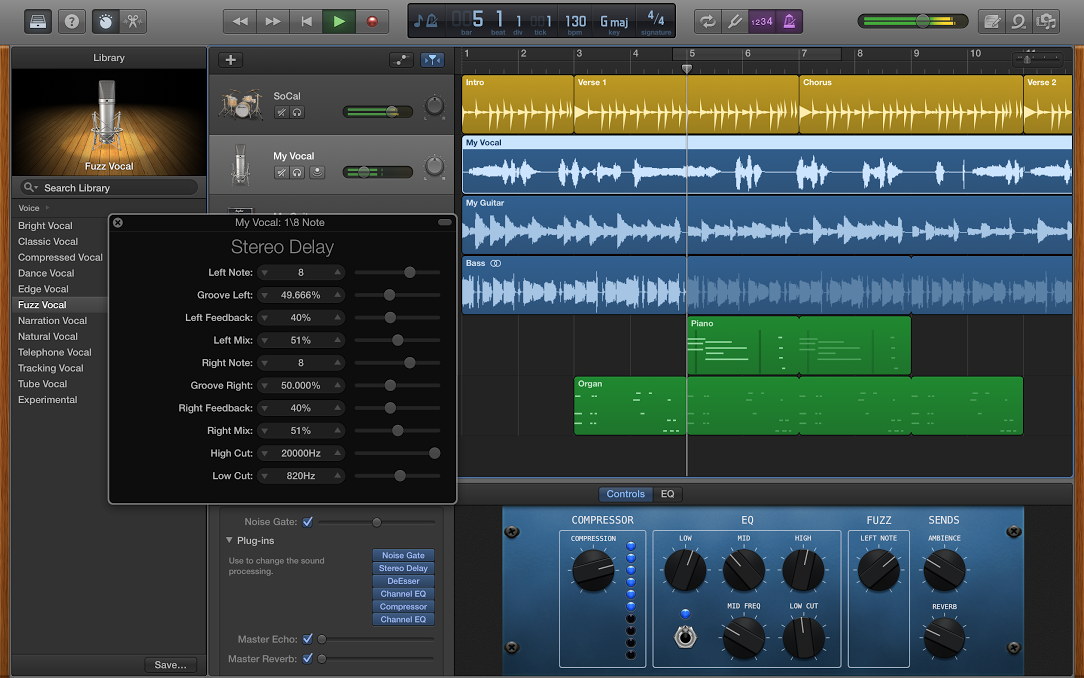When you download GarageBand from the Mac App Store, you’ll immediately get 50 sounds, 500 loops, 1 drummer, and 2 basic lessons for guitar and piano. Likely, though, you want the full package.
Download citrix receiver for mac yosemite. Button.You should see one of the two screens below.Find the Serial Number and copy it.to go to a site that tells you your computer's born-on date. When was my mac built?Now we need to make sure that your computer was built AFTER May 2010.Just like in the step above, click on the Apple then 'About this Mac'Click on the 'More Info.' The site is in the Netherlands and is in a foreign language but paste your serial number into the box and hit the button.Find the Production Year and Production Week sections.
- Free Download Garageband
- Prison Song Sample Download For Garageband Free
- Prison Song Sample Download For Garageband 2
- Prison Song Sample Download For Garageband Pc
Free Download Garageband
One of Garageband iOS’ frequently overlooked features, the sampler is a fantastic tool that you can use to turn practically any sound into a melody.
Capturing sounds using your iPad/iPhone’s built in microphone couldn’t be easier and the sampler also allows you to import tracks and sounds from your iTunes library.
Here’s how:
When you first open the sampler, you’ll be prompted to ‘point your iPad/iPhone towards a sound you want to record, then tap Start’.
Doing this will begin recording – hit the big red ‘Stop’ button when you’re done.
Once you’ve recorded your sample (or tapped the ‘my samples’ button), you’ll be taken to the editing screen. Here you can play with the sound you’ve recorded, import and edit stock or saved samples and bring tracks from your iTunes library into your project.
Some of the buttons and switches will definitely be familiar to you with many of Garageband’s other Smart Instrument controls being present.

As for the other controls and options at the top of the screen:
1. The Pitch Wheel allows you to affect the pitch of your sample during playback or while recording in real time
2. Like the Pitch Wheel, the Modulation Wheel will add expression and change the sound of your sample during playback or while recording in real time.
3. Tapping the ‘New Sample’ Button will take you back to the recording screen.
4. Tapping ‘My Samples’ wil open the sample selection menu, allowing you to import pre-made samples or samples that you’ve saved previously.
5. Tapping ‘Trim’, ‘Tune’ or ‘Shape’ will open the corresponding editing window.
Trim (shown above) allows you to crop the length of your sample.
Prison Song Sample Download For Garageband Free
Tune lets you adjust the tuning and pitch of your sample.
Shape allows you to change the volume of your sample over time.

6. Tapping ‘Rev’ or ‘Loop’ will reverse your sample, while loop as you might imagine, loops it!
As I mentioned previously, you can import sounds and even whole tracks from your iTunes library into Garageband’s sampler.
From the recording screen (tap ‘New Sample’) tap ‘Import’. A menu will appear, allowing you to import from Garageband’s Loop library, any Audio Files you may have stored on your iDevice and Music from your iTunes library. You can now edit and play with these imported tracks and sounds to your heart’s content!
Garageband’s Sampler is a great way to insert some awesome sounds and unique personality to your project. What kind of sounds have you created with it? Do you find it useful? Let me know in the comments below!
You can open the Sound Library from the Sound browser, the Live Loops browser, and from instruments that have additional sounds available for download. To open the Sound Library, your device must be connected to the Internet.
Open the Sound Library
Prison Song Sample Download For Garageband 2
To open the Sound Library from the Sound browser:
Prison Song Sample Download For Garageband Pc
- In an existing song, tap to open the Sound browser, swipe until you see Sound Library, then tap Sound Library.
- If you’ve created a new song, the Sound browser opens automatically. Swipe until you see Sound Library, then tap Sound Library
To open the Sound Library from an instrument like Drummer:
- If necessary, select the Drummer track in Tracks view, then tap in the control bar.
- Tap the drummer name, then tap “Get more Drummers.” The number indicates how many additional drummers are available.
To open the Sound Library from a Live Loops song:
- In an existing song, tap to open the Template browser, then tap Sound Library.
- If you’ve created a new Live Loops song, the Template browser opens automatically. Tap Sound Library.
Navigate the Sound Library
Once you've opened the Sound Library, do any of the following to navigate it:
- Tap a tile to see more sounds.
- Tap Preview to hear samples of the sounds.
- Scroll to view additional information about the sound pack, including file size.
- Tap Get to download the sounds to your device.
- To delete a downloaded sound pack, tap the tile, then tap Delete